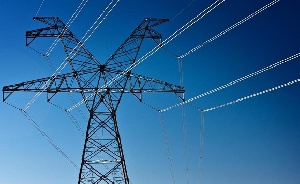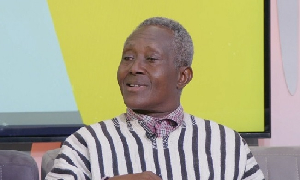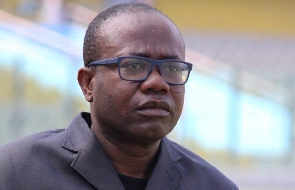‘Dumsor,’ the street name for the power outages currently plaguing the state, has become a major problem for individuals and businesses. Hence, Ghanaians have had to battle with energy crisis much longer than they anticipated.
The New Patriotic Party Member of Parliament for Ablekuma West concluded that the phenomenon is a deliberate attempt to cripple businesses of the opposition who are majorly in the Southern part of Ghana as the Northern Regions, Volta & Brong Ahafo hardly experience black-outs.
The Government, VRA and Electricity Company of Ghana have been largely blamed for Dumsor but the question still asked by many is what exactly the root cause of this crisis is?
The Western Regional Minister, Paul Evans Aidoo, earlier said reassuringly that with the onset of the rains, the Akosombo and Bui dams would have enough water to enable the power stations to operate at full capacities.
Former Chief Executive of electricity generators, the Volta River Authority (VRA), Dr. Charles Wereko-Brobby, said government owes the Electricity Company of Ghana (ECG) about $1.6 billion while ECG owes the VRA a similar amount.
According to Ghana Growth and Development Platform, deteriorated machinery, low level of water and gas supply have been named as the leading reason for this prevailing crisis ‘dumsor’ which has worsened since December 2014.
Wereko-Brobby also asserted that the maintenance works on TICO unit No.1 was completed in April, releasing 100 megawatts more to the national grid. When the Kpong thermal is fully restored, this expected in May, it can also generate 36 megawatts.
The TICO Steam turbine is scheduled to be up and running by May and will bring 100 more crucial megawatts this month. The 180 megawatts Sunon Asogli expansion thermal plant is projected to give off its full capacity by June, he continued.
But sources at the nation’s largest power producer, Volta River Authority have told The aL-hAJJ that the VRA has started receiving gas from the Atuabo Gas plant through the Aboadze thermal enclave to power its machines.
The VRA is said to have switched all five of its units to gas to replace light crude, which will generate about 500 megawatts to minimize the power outages. Recently, the state owned Daily Graphic reported that the Atuabo Gas Plant has started producing 54 million standard cubic feet of gas, 370 metric cubes of Liquefied Petroleum Gas a day and 100 metric cubes of condensates for power generation.
With this new development in the power sector, the power cuts will not be severe as it has been in recent times. This improvement in power supply in coming weeks means that the 500MW deficit which is the cause of the current load shedding, could be bridged.
Few days from now the steam component of TICO has also come up with 100Mw. All things being equal we are expected to see significant, if not drastic, reduction in the load shedding deficit by mid may.
As part of its commitment to help bridge the gap between the country’s electricity supply vis-a-vis demand, managers of Karpowership are negotiating with ECG to bring down immediately a 120MW power ship before the completion of the 450MW plants in August and September.
Energy expert and former Chief Executive of VRA, Charles Yves Wereko Brobbey has predicted that dumsor could end in July when maintenance works on important power installations are complete.
However, he said, the problem could resurface if government does not settle a $30 million debt VRA owes Nigeria.
Ghana’s total capacity
According to the Energy Commission, installed generation capacity available for grid supply as at the end of 2013 was about 2,936 Megawatt (MW)
Hydroelectric generation at Akosombo, Bui and Kpong constituted 53.8% of this amount whereas thermal generation at the dual fuel natural gas, light cycle oil and diesel plants in Tema and Takoradi (Aboadzi) provided 45.9% of installed capacity. Renewable constituted only 0.1% whereas LPG generation from Genser power provided the remaining 0.2% of installed capacity.
According to the Energy commission, demand for power has been estimated to increase 10-15% year-on-year in the past three decades. Thus, new generation capacity must increase by at least the same percentage per year in order to support expanding industrial, institutional, commercial household and other needs as the country develops.
However, currently only about1,500 MW or 51% of the 2,936 MW installed capacity has been available in recent times due to a myriad of factors, the primary one being the unavailability of gas to power the thermal plants and government’s inability due to fiscal constraints to purchase light cycle crude oil as an alternative.
This is compounded by the declining rainfall patterns which affect the hydro plants. The Bui hydro plant, for example, has predominantly seldom run at more than 40% of its installed 400 MW capacity since it was commissioned with great fanfare in 2013 December due to the low water level. Thus, the dry season we are in currently has to end before rainfall can increase the water level to allow for a higher level of generation. Peak power demand in Ghana currently stands at about 2,000 MW. For 2014, Ghana’s peak load ranged between 1,900-2,200 MW. This excludes the 10-20% reserve margin needed for system redundancy.
Gross electricity supplied in 2013 was about 12,871 GWh (an average of 1,469 MW per day) against a forecast of 16,113 GWh (1,839 MW per day) for the year. Of the actual quantity supplied, hydro comprised only 936 MW (32% of the total installed capacity or 59% of hydro capacity) whereas thermal sources constituted 527 MW (18% of the total installed capacity or 39% of total thermal capacity). This condition created a 20% supply deficit in relation to forecasted demand, thus necessitating the load-shedding ‘dumsor’ that has been carried since 2013. The 2010 Wholesale Power Reliability Assessment report estimated that Ghana loses between 2-6% of GDP annually due to insufficient wholesale power supply, which excludes a number of indirect costs of lost economic output.
In analyzing these statistics, the current power crisis is not the result of lack of generating capacity as we have in excess of 500 MW to meet current demand conditions – if all plants were fully functioning.
Statistics show that in order to get rid of the power outages, the Government has to pay its debt to the Nigerians to guarantee consistent gas supply to Ghana’s thermal plants. VRA owes Nigeria $30 million completing the cycle of power-related debts.
Every Ghanaian, including members, business owners and sympathizers of the governing National Democratic Congress, NDC, are feeling the debilitating effects of the energy situation. And that's why it's so unfortunate and repugnant when politicians play the politics with the issue, and create the impression that only non-NDC members and sympathizers feel the effects of the energy situation Ghana is facing.
General News of Saturday, 9 May 2015
Source: www.ghanaweb.com

















